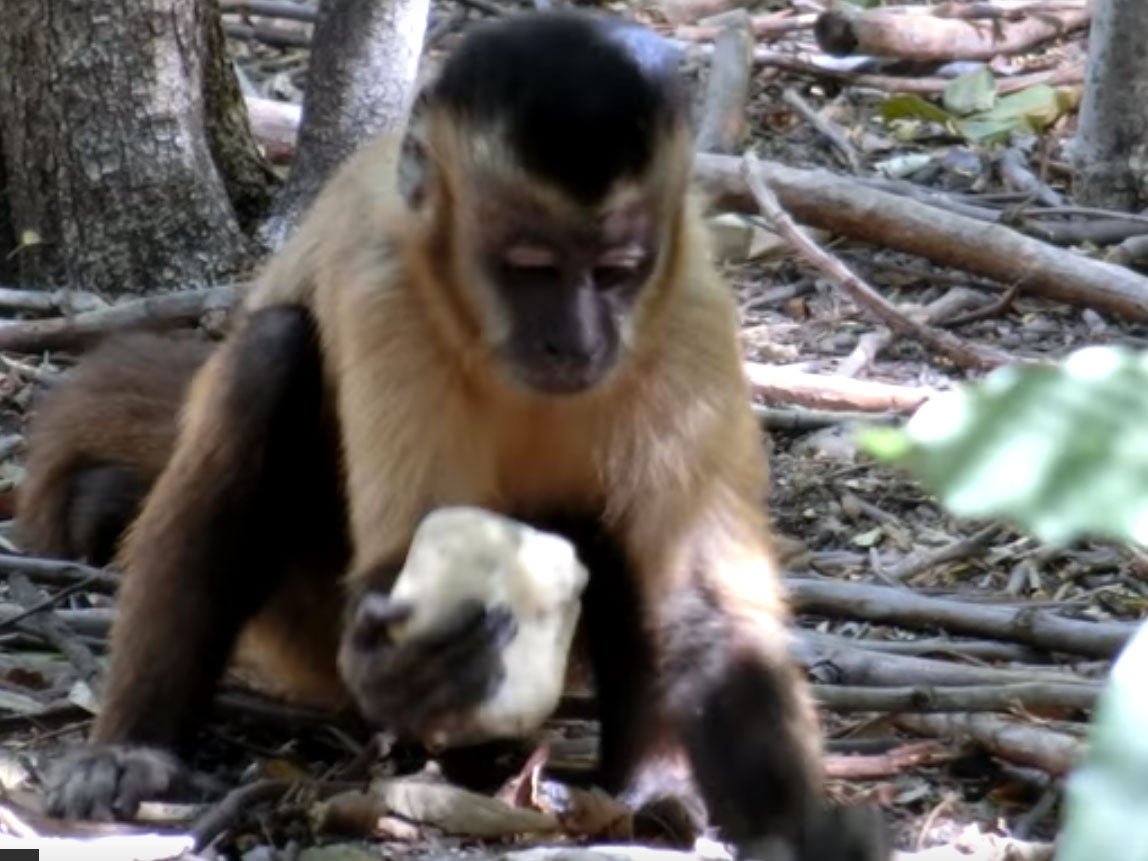Monkeys have been using tools for at least 700 years, archaeologists discover
However, Dr Michael Haslam, lead author of a paper about the research says: ‘The potential for there to be a chimpanzee who would invent a microwave or a Boeing 747 really isn’t there anymore’

The use of tools was once seen as a key dividing line between humans and the rest of the animal kingdom.
But new research has found it’s actually so easy that a monkey can do it, as the saying goes.
Archaeologists have discovered capuchin monkeys in Brazil have been using stone hammers and anvils to break open cashew nuts for at least 700 years.
And they suggested that humans might have discovered that the nuts were good to eat after stumbling across the site of the monkeys’ “cashew-processing industry”.
But the capuchins appear to be hidebound traditionalists, always opening the nuts in the same way, rather than attempting to invent a better way of doing it.
Dr Michael Haslam, lead author of a paper about the research in the journal Current Biology, said: “We have new evidence that suggests monkeys and other primates out of Africa were also using tools for hundreds, possibly thousands of years.
“This is an exciting, unexplored area of scientific study that may even tell us about the possible influence of monkeys’ tool use on human behaviour.
“For example, cashew nuts are native to this area of Brazil, and it is possible that the first humans to arrive here learned about this unknown food through watching the monkeys and their primate cashew-processing industry.”
The monkeys use hard quartzite stones as hammers and flat sandstones as anvils when breaking open the nuts.
And they also tend to do this in the same places – usually close to the trees that produce them – partly because the right kinds of stones are already laid out like “a set of cutlery in a restaurant".
The archaeologists excavated one site down to a depth of 70cm, where they found a total of 69 stones with signs of damage caused by the repeated pounding and the residue of cashews.
A number of small pieces of charcoal found with the stones were then carbon dated to about 700 years ago.
The research suggests capuchins have not managed to build on the work of the original monkey inventor who pioneered the technique.
“In capuchin terms, 700 years is about 100 generations. The same thing in human terms would be about 2,500 years,” Dr Haslam said.
“They [the capuchins] tend to use the same types of materials in the same ways, unlike humans who have in the last 2,500 years have gone from obviously the Iron Age to where we are now.”
The populations of species that have showed significant promise as tool-makers – apart from humans – have all been reduced by our domination of the planet.
And Dr Haslam said this meant it was unlikely that any other animal would come to rival our success with tools.
“The potential for there to be a chimpanzee who would invent a microwave or a Boeing 747 really isn’t there anymore,” he said.
“We have to accept that we are the chimpanzee that did that and live with that.”
Join our commenting forum
Join thought-provoking conversations, follow other Independent readers and see their replies
Comments
Bookmark popover
Removed from bookmarks